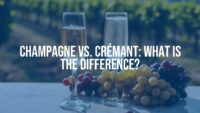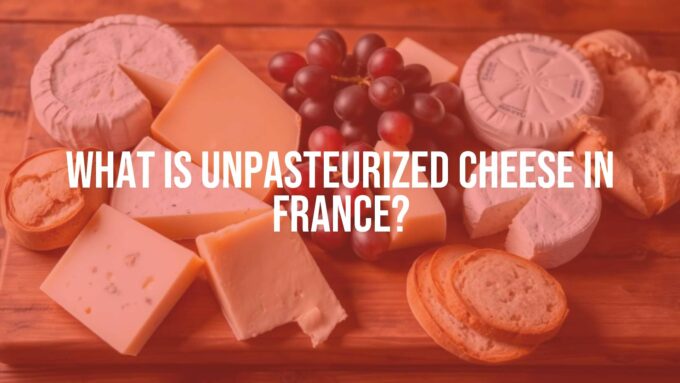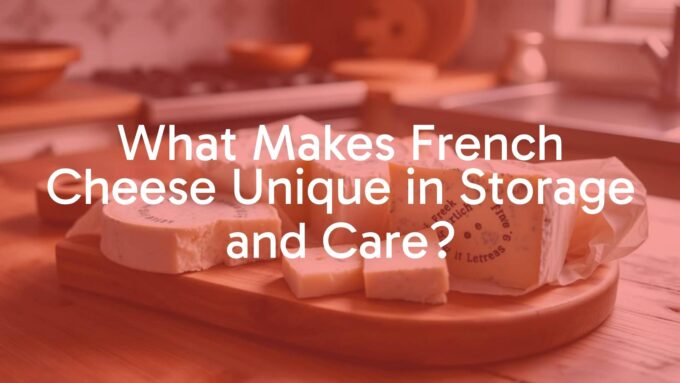Champagne and Crémant are both sparkling wines that bring lively bubbles to any event, but they differ in more than just name. The biggest differences come from where they are made, the laws that define them, and the grapes they can use. These rules shape their taste, how long they can age, and their prices. Both use the traditional method, but Champagne follows stricter rules and is tied to one region, while Crémant comes from several regions in France (and one outside), offering a wider range of styles that are often easier on the wallet.
Knowing these differences can help you enjoy sparkling wines more and pick the right bottle, whether you want the prestige of Champagne for a major celebration or the easy charm and variety of Crémant for a friendly get-together.

Champagne vs Crémant: What Sets Them Apart?
Are Champagne and Crémant Both Sparkling Wines?
Yes. Both Champagne and Crémant are types of sparkling wine. Sparkling wine has dissolved carbon dioxide, which makes the bubbles. Within this broad group, Champagne and Crémant stand out because they share the same production approach.
Both are made with the traditional method, a detailed process that creates a second fermentation inside the bottle. This step is key to their fine bubbles and layered flavors. Still, even with this shared method, they differ a lot because of where they come from and the strict rules they must follow.
Common Misconceptions About Champagne and Crémant
Many people think “Champagne” is a general term for all sparkling wine. That is incorrect. Champagne is a protected name and can only come from the Champagne region in France. A sparkling wine made elsewhere, even with the same method, cannot be called Champagne. That is where Crémant comes in: it is made in a similar way but from other regions.
Another myth is that Crémant is just a “lower quality” Champagne. While Champagne often costs more and is famous for depth and long aging, many Crémants offer excellent quality for the price. Saying one is always better misses the point. Different regions, grapes, and styles give each Crémant area its own identity. Judging only by price or fame can keep you from discovering many enjoyable bottles.
Production Regions and Legal Definitions
Where Is Champagne Produced?
Champagne comes only from the Champagne region in northern France. This is not just tradition; it is a strict legal rule under the Appellation d’Origine Contrôlée (AOC) system. The region’s borders are precisely mapped, with a web of vineyards and historic underground cellars recognized by UNESCO.
The cool climate, chalky soils, and specific grapes grown there shape Champagne’s unique style. So, if a sparkling wine is not made within the defined Champagne vineyards in France, it cannot use the name “Champagne,” no matter how it was produced or how good it is.
Which Regions Make Crémant?
Unlike Champagne’s single origin, Crémant is produced in several AOC regions across France, plus one outside France. There are eight French AOCs for Crémant, each offering its own take on sparkling wine:
- Crémant d’Alsace: Crisp and often made from Pinot Blanc, Pinot Gris, Auxerrois, Pinot Noir, and Riesling.
- Crémant de Bourgogne: From Burgundy, usually Pinot Noir and Chardonnay, echoing the region’s still wines.
- Crémant de Loire: Often uses Chenin Blanc, Sauvignon Blanc, and Cabernet Franc.
- Crémant de Bordeaux: Fruity styles, sometimes with Merlot and Cabernet Franc.
- Crémant de Jura: Local grapes like Poulsard, Trousseau, and Savagnin, plus Pinot Noir and Chardonnay.
- Crémant de Limoux: Mostly Chardonnay and Chenin, with the local Mauzac.
- Crémant de Die: From the Rhône Valley, with Clairette as a key grape.
- Crémant de Savoie: Features alpine grapes like Jacquère and Altesse.
Outside France, there is also Crémant de Luxembourg. Each area brings its own soils, climate, and grapes, making a wide range of styles.

Protected Designations and AOC Status
Both Champagne and Crémant follow strict protected rules, known in France as AOC. These rules cover where the wine comes from and many parts of how it is made to keep quality and authenticity high. For Champagne, the AOC is very strict and sets standards for vineyard work, pressing, and, importantly, that the wine must come from the Champagne region.
Crémant wines also follow AOC rules in their regions. These rules support high standards and the traditional method but are usually looser than Champagne’s, especially for grape choices and aging time. The term “Crémant” was adopted in 1975 by the INAO for regions like Alsace, Loire, and Jura to set them apart from Champagne while still linking them to the traditional method. This helps buyers trust both the origin and the quality of Champagne and Crémant.
Production Method: Similarities and Distinctions
What Is the Traditional Method (Méthode Traditionnelle)?
The core of both Champagne and Crémant is the traditional method, also called “Méthode Champenoise” for wines from Champagne. This multi-step process creates fine, steady bubbles and complex flavors, unlike tank-made sparkling wines such as Prosecco. It starts with a still base wine.
After the first fermentation, winemakers add sugar and yeast (called liqueur de tirage) to the bottle. This begins a second fermentation in the bottle. As yeast eats the sugar, it makes alcohol and carbon dioxide, which stays in the sealed bottle and creates the bubbles. The wine then ages on the lees (spent yeast), adding brioche, bread, and nut notes for extra depth.

Legal Aging Requirements for Champagne vs Crémant
Both use the traditional method, but their minimum aging times, especially on lees, are different. For Crémant, the minimum lees aging is usually nine months. Many producers go longer to add more depth, and special tiers like ‘Élément’ and ‘Grand Élément’ in Crémant de Bourgogne age even longer.
Champagne has stricter rules. Non-vintage Champagne must spend at least 12 months on lees and at least 15 months total in the cellar before release. Vintage Champagne must age for at least three years. In practice, many top Champagnes age far longer, building great depth and the ability to mature in bottle.
Bottle Fermentation and Secondary Fermentation: Key Differences
Both Champagne and Crémant use the same basic in-bottle second fermentation to turn still wine into sparkling wine. Since 1990, the term “Méthode Champenoise” is reserved for Champagne only. Other wines using the same process, including Crémant, must label it “Traditional Method” or “Méthode Traditionnelle.”
Aside from the name, the steps are the same: add liqueur de tirage, let the yeast work, and trap CO2. Differences mainly come from grape choices, regional conditions, and legal aging minimums, which shape the taste and texture. Longer lees aging, seen more often in Champagne, brings stronger notes of toast, brioche, and nuts and adds to its depth.
Grape Varieties Used in Champagne and Crémant
Typical Grape Varieties in Champagne
Champagne is built on three main grapes: Pinot Noir, Chardonnay, and Pinot Meunier. Together they make up about 99% of plantings. Pinot Noir (a black grape) adds body, structure, and red fruit. Chardonnay (a white grape) brings freshness, citrus, and elegance. Pinot Meunier (a black grape) adds fruit and softness and often ripens earlier, which helps in non-vintage blends.
Champagne can be a blend of these grapes or a single-variety wine, like “Blanc de Blancs” (100% Chardonnay) or “Blanc de Noirs” (100% Pinot Noir and/or Pinot Meunier). A few rare grapes-Arbane, Petit Meslier, Pinot Blanc, and Pinot Gris-are allowed too, but they make up less than 0.3% of vineyards.
Grape Choices for Different Crémant Regions
Crémant covers a wider range of grapes, reflecting each region’s local traditions. Unlike Champagne’s narrow focus, Crémant often uses the main grapes of its home region, which leads to many flavors and styles.
Crémant d’Alsace often uses Pinot Blanc, Pinot Gris, Auxerrois, and Riesling, plus Pinot Noir. In the Loire Valley, Chenin Blanc, Sauvignon Blanc, and Cabernet Franc are common. Crémant de Bordeaux can include Merlot and Cabernet Franc, giving a different aroma set. Crémant de Bourgogne is closest to Champagne in grapes, leaning on Pinot Noir and Chardonnay, with Gamay allowed (up to 20% in rosé).
Crémant du Jura uses local Poulsard, Trousseau, and Savagnin along with Chardonnay and Pinot Noir. Crémant de Die often highlights Clairette. Crémant de Limoux blends Chardonnay, Chenin Blanc, and Mauzac. This regional mix of grapes is a big reason Crémant offers so many styles to explore.

Taste, Style, and Cellaring Potential
Flavor Profiles and Tasting Notes
Both Champagne and Crémant bring lively bubbles, but they often taste different because of their regions, grapes, and aging times. Champagne is known for depth, often showing brioche, toast, almond, and sometimes mushroom from long lees aging. You will also find green apple, citrus, white flowers, and a mineral edge, supported by bright acidity.
Crémant offers a wider range. Crémant d’Alsace can show crisp apple, pear, and floral notes with a hint of spice. Crémant de Loire, especially with Chenin Blanc, may show honey, quince, and nutty tones. Crémant de Bourgogne, based on Pinot Noir and Chardonnay, can echo Champagne’s elegance with red berries and gentle toastiness. Crémant de Bordeaux may add fruitier and herbal notes from Sauvignon Blanc or Cabernet Franc. Because Crémant uses many different grapes, flavors can range from zesty and bright to round and ripe.

Bubbles, Body, and Texture
Feel and bubbles matter a lot in sparkling wine. Champagne is praised for very fine, persistent bubbles and a creamy texture, tied to longer lees aging and the makeup of its base wines. Autolytic notes help create a fuller body and smooth feel.
Crémants also have fine bubbles thanks to the traditional method, but texture and body vary by region and grape. Some are light and crisp; others, especially with longer lees aging or richer blends, can feel creamy like Champagne. Warmer regions may show slightly higher pH and more phenolics than Champagne, which can shift texture and perceived acidity. With so much variety, you can find Crémant to match almost any taste, from brisk and bright to rich and layered.
Aging Potential: Which Keeps Longer?
For aging potential, Champagne usually leads, especially vintage wines. Vintage Champagne ranks among the longest-lived wines, developing dried fruit, nuts, coffee, and toast over many years. The region’s conditions, high acidity, and longer aging rules support this long life.
Not every Champagne is meant to age for decades, but many are. Most Crémants are best enjoyed within a few years of release, showing fresh fruit and energy. Still, some vintage Crémants from careful producers can age well for several years, sometimes up to a decade, gaining extra complexity. So while Champagne often lasts longer, good Crémant can also age nicely and surprise you.
Price and Value Comparison
Why Is Champagne Usually More Expensive?
The price gap is clear to most shoppers, and several factors push Champagne higher. First, vineyard land in Champagne is among the most expensive in the wine world, which raises costs. The traditional method is labor-heavy, and the longer aging (especially for vintage wines) ties up storage and money for years.
Champagne also has strong global name recognition and a luxury image, which supports higher prices. Supply and demand matter too: the region is limited in size, yet demand is high. Large marketing budgets and the effort to keep Champagne’s prestige around the world also add to the final price.
Finding Quality and Value in Crémant
If you want excellent sparkling wine without paying Champagne prices, Crémant is a great choice. Land, production, and marketing costs are usually lower, so Crémant offers a similar traditional-method experience at a much lower price. Many bottles cost a fraction of even entry-level Champagnes, making them perfect for everyday use or bigger parties.
Because Crémant comes from different regions, you will find many styles and prices. From bright Crémant d’Alsace (often under $25) to more complex Crémant de Bourgogne, there is an option for almost every budget and taste. Tasting across Crémant AOCs lets you enjoy French terroirs and grape variety in sparkling form, often with a standout price-to-quality ratio that pleases both professionals and savvy shoppers.
Frequently Asked Questions About Champagne and Crémant
Is Crémant as Good as Champagne?
This depends on your taste, the specific bottle, and the occasion. Crémant uses the same traditional method as Champagne, giving fine bubbles and the chance for complexity. Many Crémants are very well made and can match some Champagnes, especially for value.
Still, Champagne is famous for producing some of the most complex and age-worthy sparkling wines, thanks to its terroir, strict rules, and long aging. A top Crémant can shine in a blind tasting, but the depth, autolytic character, and long track record of the best Champagnes often set them apart. It is better to see Crémant as a different but equally valid expression of traditional-method sparkling wine, not a lesser stand-in. Many wine lovers enjoy both for what each does well.
How Long Does Crémant Last Compared to Champagne?
Champagne, especially vintage and prestige cuvées, usually ages longer than most Crémants. That comes from higher acidity, grape choices like Pinot Noir and Chardonnay, and longer required time on lees. Many fine Champagnes can develop for 10 years or more.
Crémants often have shorter minimum aging (about 9-12 months on lees) and are typically released to drink young, when fruit and freshness are brightest. Some standout vintage Crémants can age for several years, even up to 5-10 years, but most are not meant for very long cellaring. If you want a bottle to keep for a long time, Champagne is usually the safer choice, while Crémant shines for early drinking and strong value.













Leave a comment